Manchukuo Imperial Palace Museum: Where History Meets Culture
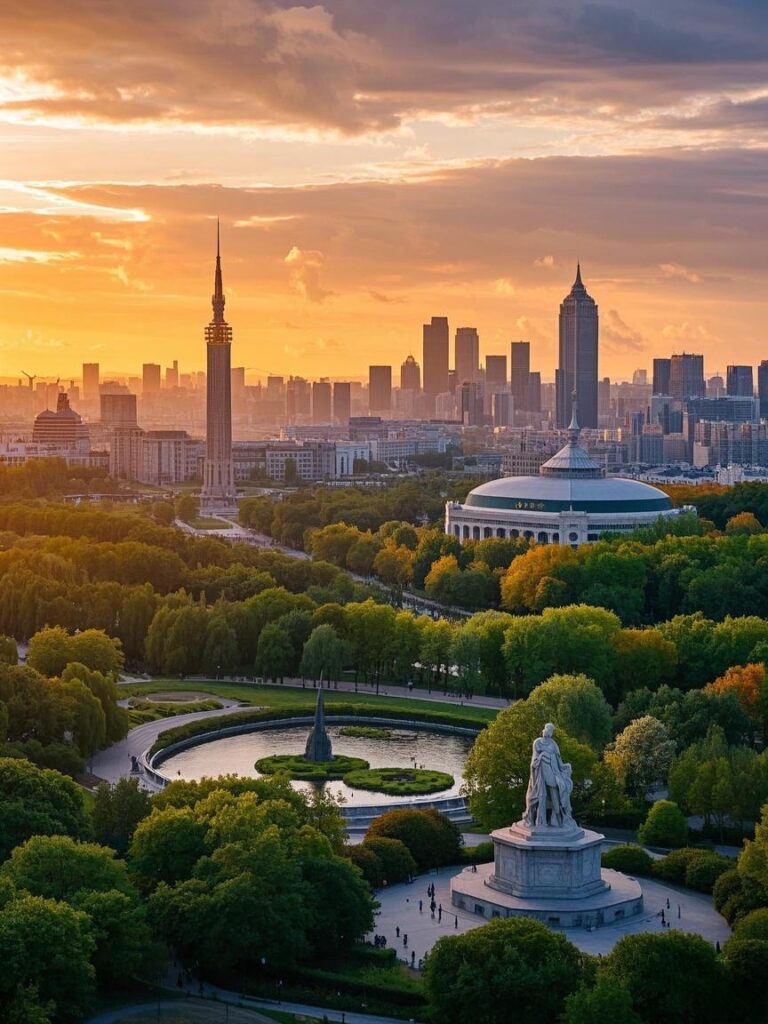
An Essential Guide to Visiting Manchukuo_Imperial_Palace_Museum
Nestled in the heart of Changchun, the Puppet Manchukuo Imperial Palace Museum stands as a poignant testament to a turbulent chapter in Chinese history. This striking structure, once the residence of Puyi—the last emperor of China and the figurehead of the puppet state of Manchukuo—invites visitors to step back in time and explore a unique blend of imperial grandeur and the complexities of colonial rule. As you wander through its elegantly appointed halls, where the echoes of history resonate through intricately carved wooden staircases and vibrant red walls, you’ll be enveloped in a narrative rich with tales of power, ambition, and loss.
The museum is not merely a collection of artifacts; it is a carefully curated experience that reveals the life of Puyi, from his lavish lifestyle to the stark realities of his captivity. Each room tells a story—the opulent piano room, the secluded gardens, and the remnants of a bygone era all serve to illustrate the contradictions of a man who was both an emperor and a prisoner. Whether you’re an avid historian or a curious traveler seeking to understand the complexities of this fascinating period, the Manchukuo Imperial Palace Museum offers an unforgettable glimpse into a world of splendor overshadowed by strife.
Prepare to be captivated by the architectural beauty and the rich tapestry of stories that await you at this remarkable museum, where the past is preserved for future generations to contemplate.
In This Guide
- An Essential Guide to Visiting Manchukuo_Imperial_Palace_Museum
- The Rich History and Legends of Manchukuo_Imperial_Palace_Museum
- Main Highlights: What You Absolutely Can’t Miss
- Planning Your Visit: A Practical Guide
- Tickets: Prices, Booking, and Tips
- How to Get There: A Complete Transportation Guide
- Local Cuisine and Accommodation Nearby
- Frequently Asked Questions
- Final Thoughts on Your Trip
The Rich History and Legends of Manchukuo_Imperial_Palace_Museum
Nestled in the heart of Changchun, the Manchukuo Imperial Palace Museum stands as a testament to a tumultuous chapter in Chinese history. Once the residence of Puyi, the last emperor of China, this architectural marvel was transformed into a palace for the puppet regime of Manchukuo from 1932 to 1945.
The palace itself is an intriguing fusion of Eastern and Western architectural styles, characterized by its yellow glazed roof tiles and small two-story structures. Key buildings such as the Qinmin Building, Jixi Building, and Tongde Hall offer a glimpse into the opulent yet paradoxical life of Puyi during this period. Here, he was both an emperor and a puppet, a figurehead under the control of the Japanese invaders.
Visitors to the museum can explore the lavish interiors that once housed the emperor’s private quarters, complete with a piano room, billiard room, and a garden. Despite its grandeur, the palace was a gilded cage; Puyi lived under constant surveillance, a poignant reflection of his tragic fate. The museum is filled with historical artifacts and documents that shed light on the complexities of his life and the broader implications of the Manchukuo regime.
As you walk through its halls, the atmosphere feels heavy with stories of a bygone era. The wooden staircases creak underfoot, echoing the footsteps of those who once traversed them. The red walls and dark tiles seem to whisper long-forgotten courtly secrets, inviting you to dive deeper into the narratives of power, loss, and identity that defined this strange imperial experiment.
Not only does the museum preserve the memory of an empire that has all but vanished, but it also serves as a poignant reminder of the struggles faced by a nation caught in the throes of conflict and change. For international travelers, the Manchukuo Imperial Palace Museum offers a unique opportunity to engage with a chapter of history that is often overlooked, ensuring that the stories of its past are not forgotten.
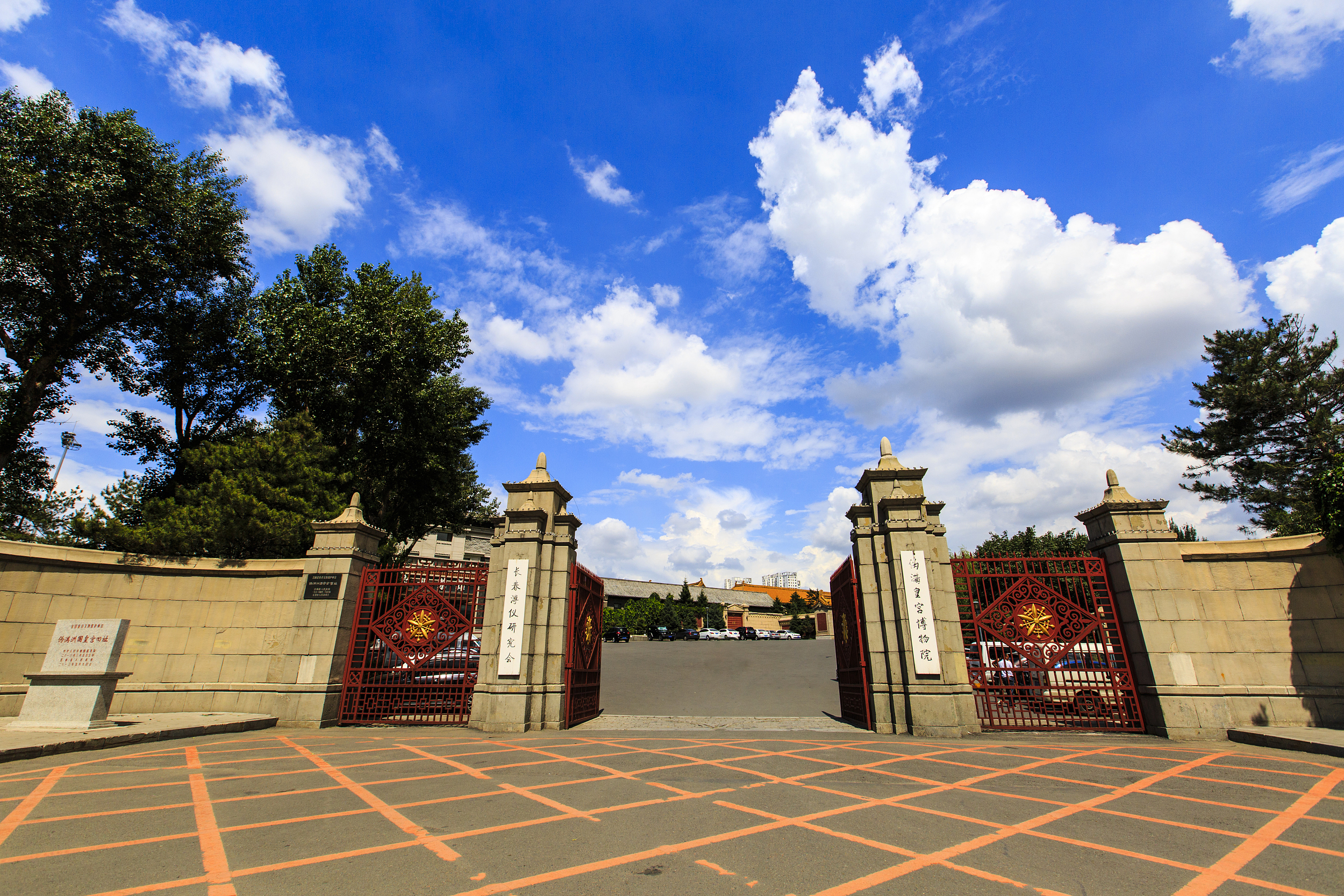
Manchukuo_Imperial_Palace_Museum.
Main Highlights: What You Absolutely Can’t Miss
When visiting the Puppet Manchukuo Imperial Palace Museum in Changchun, you’ll discover a fascinating blend of history and architectural beauty that transports you back to a tumultuous era in Chinese history. Here are the key highlights that you absolutely cannot miss:
The Iconic Architecture
The museum is housed within the former imperial palace of Aisin Gioro Puyi, the last emperor of China, and offers a striking example of architectural fusion. The main buildings, including the Qinmin Building, Jixi Building, and Tongde Hall, showcase an intriguing blend of traditional Chinese and Western styles. With their yellow glazed roof tiles and elegant two-story structures, these buildings tell a story of their own.
A Glimpse into Puyi’s Life
As you wander through the halls, you’ll find numerous exhibits that chronicle Puyi’s life from his rise to power to his eventual downfall. The museum provides insights into his time as a puppet emperor under Japanese rule, including artifacts and personal belongings that paint a vivid picture of his luxurious yet confined existence. Don’t miss the exclusive display of items from Puyi’s personal life, including his piano and billiard room, which reflect his attempts at maintaining a semblance of normalcy in a life overshadowed by surveillance.
Historical Exhibits
The museum serves as a treasure trove of historical documents and cultural relics that delve into the complexities of this era. Look out for exhibitions detailing the impact of the Japanese invasion and the subsequent cultural ramifications. Each exhibit offers a unique perspective, providing context to the political struggles and the life of the last emperor.
The Enchanting Courtyards
Take a moment to stroll through the serene courtyards that surround the main buildings. These spaces were once private areas for Puyi and his family, showcasing beautiful landscaping and tranquil environments. Here, you can appreciate the contrast between the outer world and the secluded life led by Puyi within these walls.
The Museum Atmosphere
The ambiance within the museum is steeped in history. The creaking wooden staircases and the rich red walls evoke a sense of nostalgia, making each step feel like a journey through time. This sensory experience is complemented by knowledgeable staff who are eager to share stories and insights about the exhibits and the palace’s storied past.
Practical Information
The museum is open daily from 8:30 AM to 6:00 PM, with ticket sales ending at 4:40 PM. It’s advisable to allocate at least two hours to fully explore the exhibits and soak in the history that permeates this significant site.
Visiting the Puppet Manchukuo Imperial Palace Museum is not just about viewing artifacts; it’s about immersing yourself in a narrative that shaped a nation. Whether you are a history buff or simply curious about the past, this museum promises a captivating experience that will linger long after your visit.
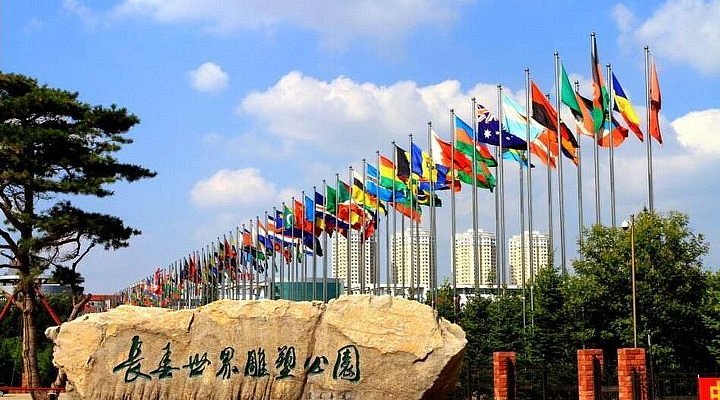
Manchukuo_Imperial_Palace_Museum.
Planning Your Visit: A Practical Guide
Visiting the Manchukuo Imperial Palace Museum is a journey back in time, offering a fascinating glimpse into a unique chapter of Chinese history. Here’s everything you need to know to make the most of your trip to this remarkable site in Changchun.
Getting There
Location:
The museum is located at No. 5, Guangfu North Road, Kuancheng District, Changchun City, Jilin Province. It’s easily accessible via public transport, taxi, or personal vehicle.
Transportation Options:
– By Air: The nearest airport is Changchun Longjia International Airport, approximately 30 kilometers from the city center. From there, you can take a taxi or an airport shuttle to reach the museum.
– By Train: Changchun Railway Station connects to various cities across China. Once in Changchun, local buses or taxis can take you to the museum.
– Public Transport: Several city buses service the area, making it convenient to reach the museum from different parts of the city.
Opening Hours
The museum is open daily from 8:30 AM to 6:00 PM, with ticket sales closing at 4:40 PM. Be sure to check for any holiday hours or special events that might affect access.
Admission Fees
While specific pricing may vary, tickets can generally be purchased at the entrance. It’s advisable to check online for any promotions or discounts available for international visitors.
What to Expect
As you step into the museum, you’ll be greeted by architecture that blends traditional Chinese and Western styles, reflecting the unique history of the Manchukuo era. Key highlights include:
- Qinmin Building: Explore the lavish living quarters of Puyi, the last emperor, featuring elegant furnishings and personal artifacts.
- Jixi Building: This space showcases exhibits detailing the era’s historical context and the impact of Japanese occupation.
- Tongde Hall: A notable assembly hall where important meetings took place, offering insights into the political dynamics of the time.
Walking through the museum is akin to browsing through the pages of a well-worn history book. Each room resonates with stories of grandeur, turbulence, and the complexities of an empire that once was.
Tips for Your Visit
- Guided Tours: Consider joining a guided tour to enhance your understanding of the exhibits. Knowledgeable guides can provide context and share intriguing stories about the palace and its former inhabitants.
- Photography: While you can take photos in most areas, be aware of any restrictions in specific exhibit spaces.
- Comfortable Footwear: The museum encompasses a significant area, so wear comfortable shoes as you explore its many corridors and staircases.
- Plan for Time: Allocate at least two to three hours for your visit to fully appreciate the exhibits and soak in the history.
Nearby Attractions
After your visit to the museum, take the opportunity to explore nearby attractions:
– Zoological Gardens: Enjoy a leisurely stroll and discover local wildlife.
– Changchun Film Studio: A fascinating spot for film enthusiasts that showcases the history of Chinese cinema.
– Parks and Gardens: The lush green spaces in and around Changchun offer a nice contrast to the historical insights gained at the museum.
Local Cuisine
Don’t miss the chance to sample local delicacies in Changchun. Nearby restaurants offer a range of options, from traditional northeastern Chinese dishes to modern culinary interpretations.
Final Thoughts
The Manchukuo Imperial Palace Museum is not just a historical site; it’s a portal into a complex past that shaped the region. By planning your visit with these tips in mind, you’ll ensure a rich and enlightening experience that deepens your understanding of this unique chapter in Chinese history. Enjoy your journey through time!
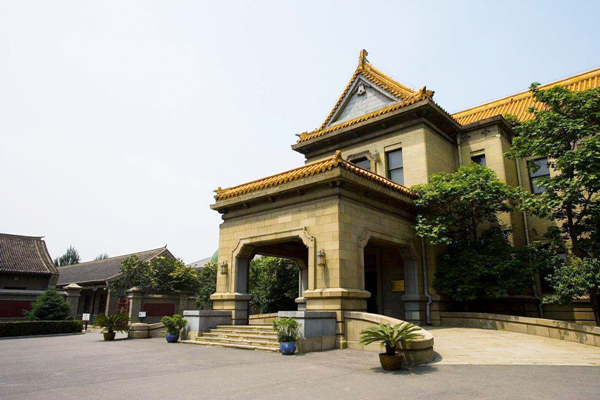
Manchukuo_Imperial_Palace_Museum.
Tickets: Prices, Booking, and Tips
Visiting the Puppet Manchukuo Imperial Palace Museum is a journey through an evocative chapter of history, and planning your visit is essential for an enriching experience. Here’s everything you need to know about tickets, prices, booking, and some handy tips to enhance your visit.
Ticket Information
-
Admission Fee: As of 2025, the standard ticket price for adults is approximately PHP 6,415.4. Discounts may be available for students and seniors, though it’s best to confirm at the ticket counter.
-
Opening Hours: The museum is open daily from 8:30 AM to 6:00 PM. Last entry is allowed until 4:40 PM, so plan your visit accordingly to make the most of your time inside.
-
Location: The museum is situated at No. 5, Guangfu North Road, Kuancheng District, Changchun City. It’s easily accessible by public transport or taxi.
Booking Tickets
To secure your tickets, consider the following options:
-
Advance Booking: You can book tickets online through various travel platforms, such as Trip.com, which often offers promotions and detailed visitor information. Booking in advance can save you time and guarantee entry during peak tourist seasons.
-
On-Site Purchase: If you prefer spontaneity, tickets can also be purchased at the entrance. However, be prepared for potential queues, especially during weekends and holidays.
Tips for Your Visit
-
Timing Your Visit: Arriving early in the day can help you avoid crowds and give you a more intimate experience as you explore the museum’s exquisite architecture and exhibits.
-
Guided Tours: If you want to delve deeper into the history and significance of the exhibits, consider joining a guided tour. This can provide invaluable insights and make your visit more engaging.
-
Photography: While photography is generally allowed, be mindful of any restrictions in specific exhibit areas. Capturing the beauty of the museum’s architecture and its historical artifacts can be a highlight of your visit.
-
Plan for the Weather: Changchun experiences distinct seasons. Dress appropriately for the weather, especially if you plan to explore the museum’s gardens or surrounding areas.
-
Explore Local Cuisine: Don’t miss the opportunity to enjoy local delicacies in nearby eateries after your museum visit. The rich culinary scene in Changchun complements the historical journey.
By securing your tickets and planning ahead, you can ensure a memorable visit to the Puppet Manchukuo Imperial Palace Museum, immersing yourself in the captivating history of this unique era. Enjoy your travels!
How to Get There: A Complete Transportation Guide
Visiting the Puppet Manchukuo Imperial Palace Museum in Changchun is a fascinating journey into a historical era that shaped Northeast China. Here’s how to navigate your way to this unique destination, whether you’re arriving by air, train, or car.
By Air
The nearest airport to the museum is Changchun Longjia International Airport (CGQ). This airport offers both domestic and international flights, making it a convenient entry point for international travelers.
- From the Airport to the Museum:
- Taxi: The most straightforward option is to take a taxi from the airport. The journey to the museum takes about 40-50 minutes, depending on traffic, and will cost roughly ¥150-200.
- Airport Shuttle: Check for shuttle services that may operate to the city center; however, be aware that schedules can vary.
By Train
Changchun is well-connected by rail, making it easy for travelers coming from major cities in China, such as Beijing or Shenyang.
- From Changchun Railway Station:
- Taxi: Upon arrival, take a taxi directly to the museum. The ride will take approximately 15-20 minutes and cost around ¥20-30.
- Public Transit: Alternatively, you can use local buses or the metro system. Take Line 1 of the metro towards Wangfujing and get off at Gongnong Dajie Station. From there, it’s a short walk (about 10 minutes) to the museum.
By Bus
Changchun’s public bus system is extensive and economical, though it may require some navigation.
- Bus Routes:
- You can take bus No. 8 or No. 130 directly to Guangfu North Road, which is close to the museum. Ensure you have a translation app or a local guide to help with bus schedules and stops.
- The bus fare is typically around ¥1-2.
By Car
If you prefer to drive, renting a car can offer flexibility and convenience for exploring Changchun and its surrounding areas.
- Parking:
- The museum has parking facilities available. Be sure to check the availability of parking spaces, especially during peak tourist seasons.
Tips for Travelers
- Language: While major transportation hubs may have English speakers, it’s helpful to have key phrases written in Chinese or a translation app handy.
- Navigation: Utilize maps or navigation apps to help guide you to the museum, especially if you’re using public transport.
- Timing: Consider visiting during weekdays to avoid crowds, and check the museum’s opening hours—typically from 8:30 AM to 6:00 PM, with last admissions at 4:40 PM.
With these transportation options and tips, your visit to the Puppet Manchukuo Imperial Palace Museum will be both seamless and enriching, allowing you to dive deep into the history of this unique site. Safe travels!
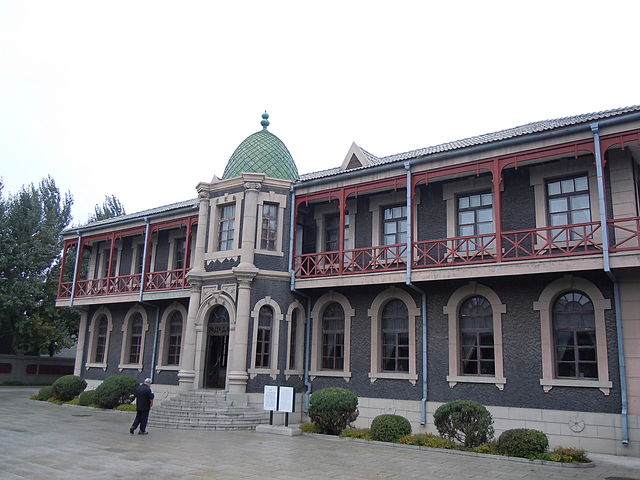
Manchukuo_Imperial_Palace_Museum.
Local Cuisine and Accommodation Nearby
Nestled in the historical heart of Changchun, the Puppet Manchukuo Imperial Palace Museum offers not just a glimpse into the past, but also an opportunity to indulge in the local flavors and find comfortable accommodations nearby. After immersing yourself in the rich history of this unique museum, you’ll want to treat your palate to some of the region’s culinary delights and relax in a cozy retreat.
Local Cuisine
Changchun’s dining scene reflects the influences of its history, with a vibrant mix of traditional Chinese dishes and unique local specialties. Here are a few must-try eateries located conveniently near the museum:
-
Wang Ji Jiang GuTou Guan: Known for its hearty local dishes, this restaurant is famous for its Guo Tou (potato dumplings) served with a variety of flavorful sauces. A perfect spot for those looking to experience authentic northeastern Chinese cuisine.
-
Hui BaoZhen Dumpling: Just a short walk away, this eatery specializes in fresh dumplings filled with a variety of ingredients, from minced pork to seasonal vegetables. Their handmade dumplings are a favorite among locals and visitors alike.
-
Da E Island Green Eco Food Park: If you’re in the mood for a health-conscious meal, this eco-friendly dining venue offers a selection of organic dishes made from locally sourced ingredients. Enjoy a serene atmosphere while savoring wholesome, delicious food.
-
QIANFENG Charcoal Grill: For a more casual dining experience, head to QIANFENG where you can enjoy grilled meats cooked to perfection over charcoal. This is a great place to unwind with friends and enjoy a lively atmosphere.
Accommodation Nearby
After a day of exploring the museum, you’ll want a comfortable place to rest. Fortunately, Changchun offers several excellent accommodations within easy reach of the Puppet Manchukuo Imperial Palace Museum:
-
InterContinental Changchun: This upscale hotel offers luxurious rooms and top-notch amenities, including a spa and multiple dining options. It’s a perfect choice for those looking to indulge after a day of sightseeing.
-
Mantu Hotel: Known for its convenient location and modern facilities, Mantu Hotel is a great option for budget travelers. The comfortable rooms and friendly staff make for a welcoming stay.
-
Wanda Realm Changchun: Located in a vibrant area close to the museum, this hotel combines modern elegance with traditional hospitality. Guests can enjoy beautifully decorated rooms and a variety of on-site dining experiences.
-
Changchun Yijia Hotel: An affordable yet comfortable option, this hotel is popular among tourists for its cleanliness and proximity to major attractions. It provides a cozy atmosphere to relax after your daily adventures.
With these culinary delights and cozy accommodations nearby, your visit to the Puppet Manchukuo Imperial Palace Museum will be complemented by an enriching experience of local culture and comfort. Enjoy your journey through time in Changchun!
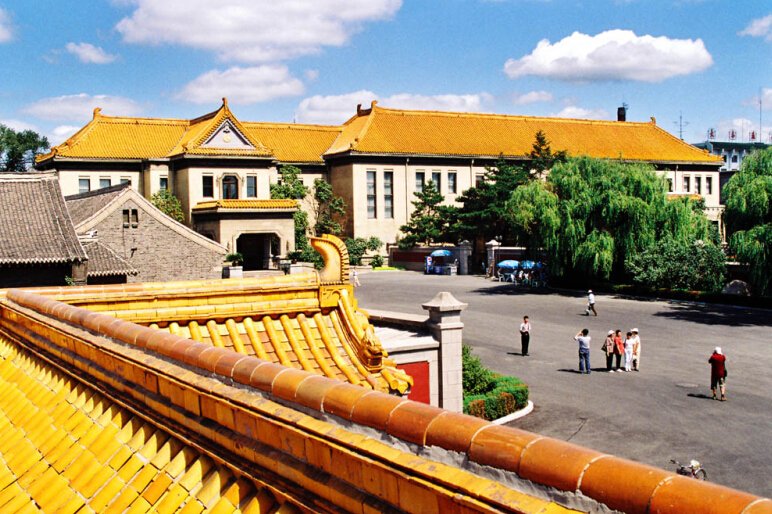
Manchukuo_Imperial_Palace_Museum.
Frequently Asked Questions
Frequently Asked Questions About the Manchukuo Imperial Palace Museum
-
What is the Manchukuo Imperial Palace Museum?
The Manchukuo Imperial Palace Museum, located in Changchun, China, was once the residence of Puyi, the last emperor of China. This museum showcases the history and culture of the puppet state of Manchukuo, blending Chinese and Western architectural styles. Visitors can explore various exhibitions detailing the life of Puyi and the historical context of Manchukuo. -
What are the opening hours of the museum?
The museum is open from 8:30 AM to 6:00 PM, with ticket sales available until 4:40 PM. It’s advisable to check for any changes in hours or special closures before your visit. -
How much is the entrance fee?
Ticket prices may vary, so it’s best to check the museum’s official website or local ticket vendors for the latest pricing information. Discounts for students and seniors may be available. -
Are guided tours available?
Yes, guided tours are often available for visitors seeking a deeper understanding of the museum’s exhibits. These tours can typically be booked on-site or in advance through the museum’s website. -
What are the must-see attractions within the museum?
Key highlights include the Qinmin Building, Jixi Building, and Tongde Hall. Each structure features unique architectural elements and offers insights into the life and times of Puyi, as well as the history of Manchukuo. -
Is the museum accessible for people with disabilities?
The museum strives to be inclusive and accessible. However, it’s recommended to contact the museum ahead of your visit to inquire about specific accessibility features, such as ramps and elevators. -
Can I take photographs inside the museum?
Generally, photography is allowed in many areas of the museum, but flash and tripods may be prohibited. Be sure to check for signage indicating photography policies in specific exhibits. -
What is the best time to visit the museum?
The museum can be quite busy during weekends and public holidays. For a more enjoyable experience, consider visiting on weekdays or during off-peak hours, such as early in the morning or later in the afternoon.
Final Thoughts on Your Trip
As your journey through the captivating halls of the Puppet Manchukuo Imperial Palace Museum comes to an end, take a moment to reflect on the rich tapestry of history that has unfolded around you. This museum stands not merely as a structure of stone and wood but as a testament to a complex era, echoing the stories of emperors and commoners alike.
Walking through its ornate rooms, you have traversed time, experiencing the grandeur and the shadows of a lost empire. The palace’s intricate architecture and the poignant exhibits serve as reminders of the resilience and adaptability of cultures through tumultuous periods. From the lavish lifestyle of Puyi to the stark realities of life under scrutiny, each corner of this museum speaks volumes about the human experience.
As you step back into the modern world, carry with you the lessons of history that the Puppet Manchukuo Imperial Palace Museum so eloquently shares. Whether it’s the whispers of forgotten courtly secrets or the vibrant pulse of Changchun outside, let this experience inspire you to explore further, seek deeper understanding, and share these stories with others. Your adventure may be ending, but the journey of discovery is just beginning—both within yourself and in the world around you. Safe travels!